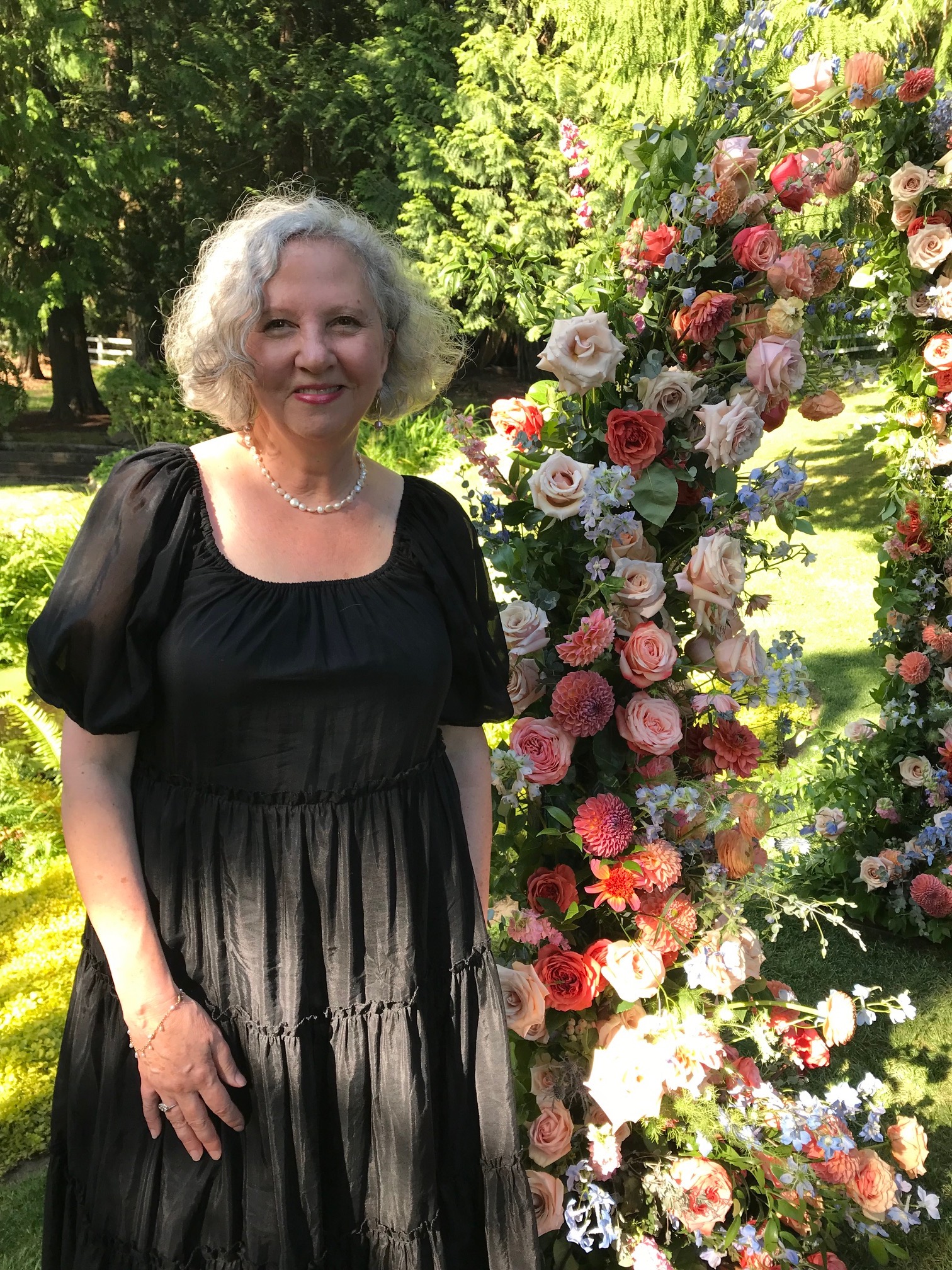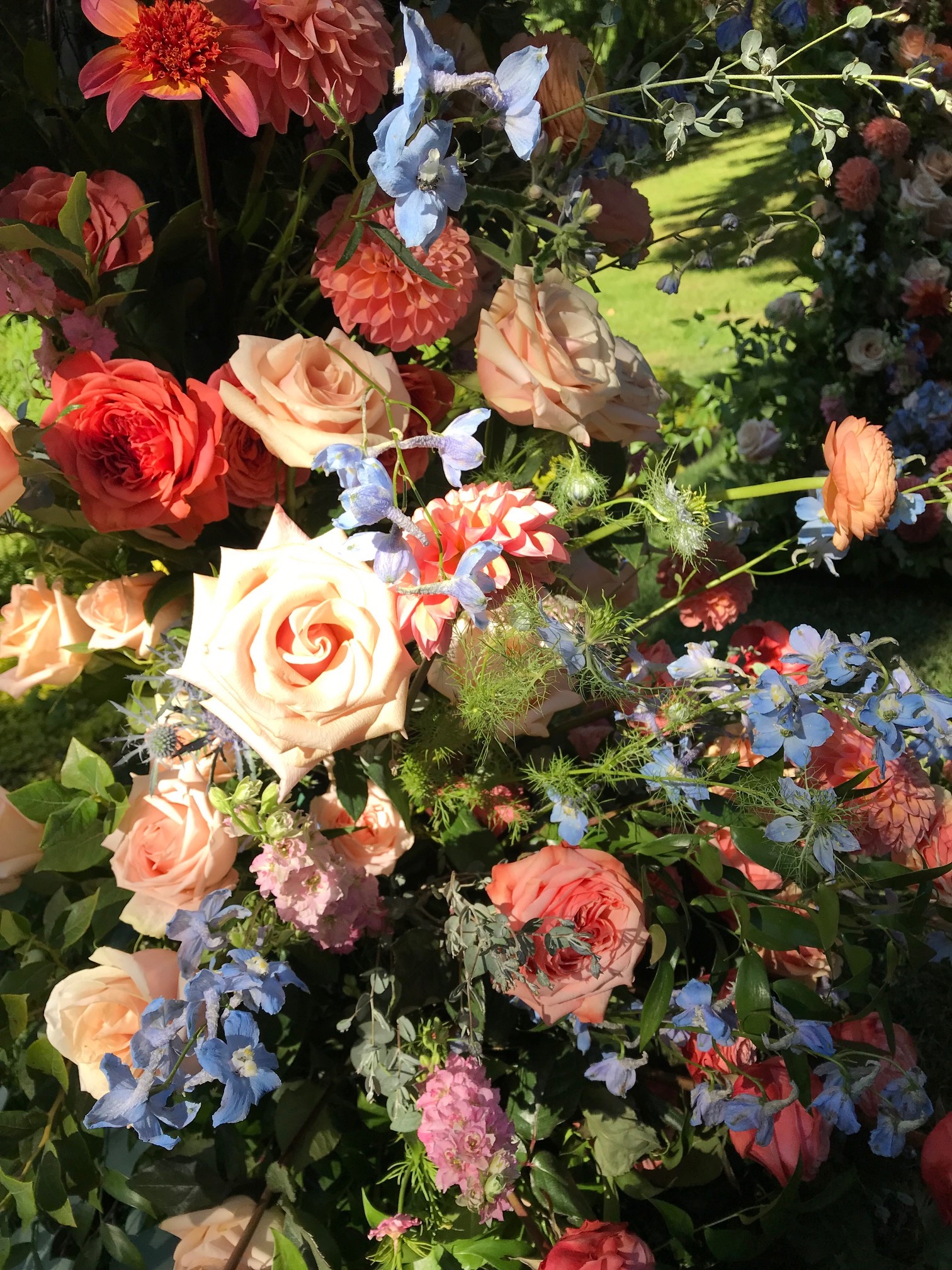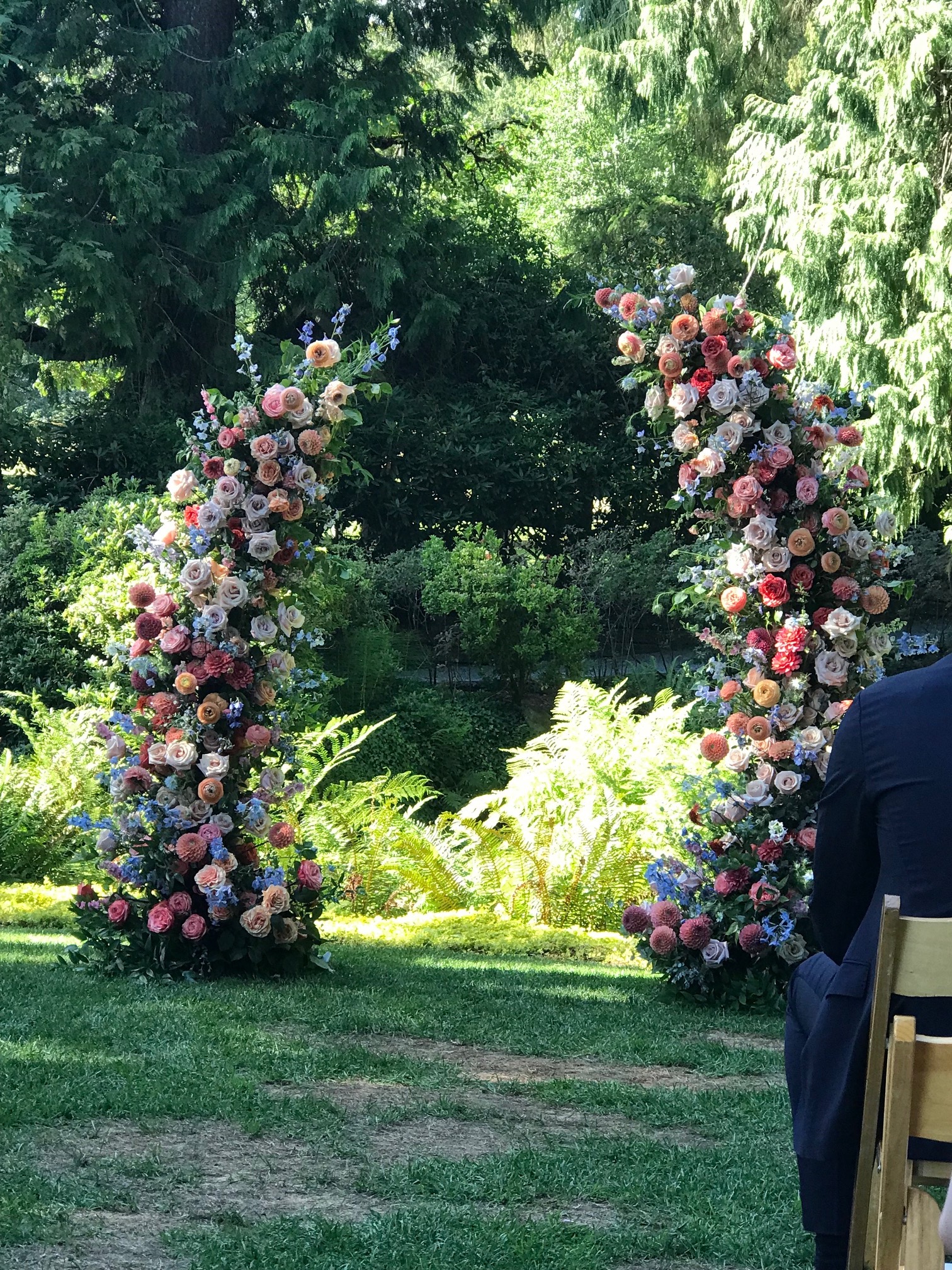IT’S THE PERFECT July afternoon and my head is full of flowers.
Last weekend, I went a beautiful wedding on the grounds of a local winery that evoked the French countryside. The bride and groom were married under the most gorgeous arch of fresh flowers I’ve ever seen. Roses, delphiniums, ranunculus, nigella, zinnias, dahlias, and more in shades of apricot, pink, rose, pale blues, lavender, white, and green. (Pause here for swooning—and more importantly, photos.)



It got me thinking about a word I’ve always loved: inflorescence.
Sadly, it doesn’t mean at all what I think it should mean, so I’d like to take the liberty of redefining it.
To me, inflorescence represents a way I would like to live, with—or in—the essence of flowers; allowing them to influence, inspire, infuse and permeate every area of my life. I wanted to have my protagonist, Lucy Silver, meditate on inflorescence in The Walled Garden, but it was one of many bits that had to come out in the interest of word count.
What inflorescence actually means is much more down-to-earth than my imaginary definition. It refers to the characteristic arrangement of flowers on a stalk or in a cluster; or to a flowering, i.e. the condition, time, and period of blossoming.
My garden all is overblown with roses,
My spirit all is overblown with rhyme,
wrote Vita Sackville-West in 1921. I’m always interested in Vita’s thoughts—not only because she was a passionate and pioneering gardener, but because she was also a prolific writer of poetry, garden columns, prose, and letters. Those two passions fed one another, as they definitely do with me. Vita was an inspiration for my character Elizabeth Blackspear in The Walled Garden.
Though Vita died in 1962, her world-famous garden, Sissinghurst, which she created with her husband Harold Nicolson, is still going strong. I’ve been there twice and it’s breathtaking. Vita led a dramatic and complicated life, but I still imagine her living somehow in the very heart of flowers. (Of course it always helps if you have a 14th century castle tower and historic oast houses, barns, and granaries on the property to build your fabulous garden around!) And yes, it all sounds very romantic, but anyone who has ever seriously gardened knows that there’s an enormous amount of back-breaking, dirty, sweaty work involved in creating that kind of beauty.
And yet . . . and yet . . .
“Flowers really do intoxicate me,” wrote Vita, and the floral wedding arch I saw this weekend has left me in a state of intoxication I have yet to get over.
In all honesty, I have to note that it’s possible this post is simply an extended pep talk to myself not to give up on my own wildly overgrown garden! I walked around it this weekend sighing—it’s just a little too big, and there’s just a little more work (OK, maybe a LOT more work) to do out there than I have energy for. And it’s 98 degrees here, so other than watering enough to keep my pots alive, none of it is going to happen today. It also doesn’t help that the garden is at that point in the summer when things start to “go over,” as the Brits say, and it all needs to be massively hacked back in order to still even be able to see the paths, let alone walk on them.
“Still, no gardener would be a gardener if (s)he did not live in hope,” writes my patron saint of gardening. So I’m off to make some iced tea, and live to garden another day.
Please drop me a line—I’d love to hear your definition of inflorescence!
And huge congrats to the happy couple, Karin and Ethan!!
Featured image by Kari Shea courtesy of unsplash.com
All other photos my own

Such a beautiful post, Robin! I always love learning new words… so thank you for inflorescence!
That floral arch with the blue, pink, and coral reds makes me think if Cath Kidston. Swoon indeed!
Thank you, Donna! So glad you enjoyed inflorescence and those swoony flowers!